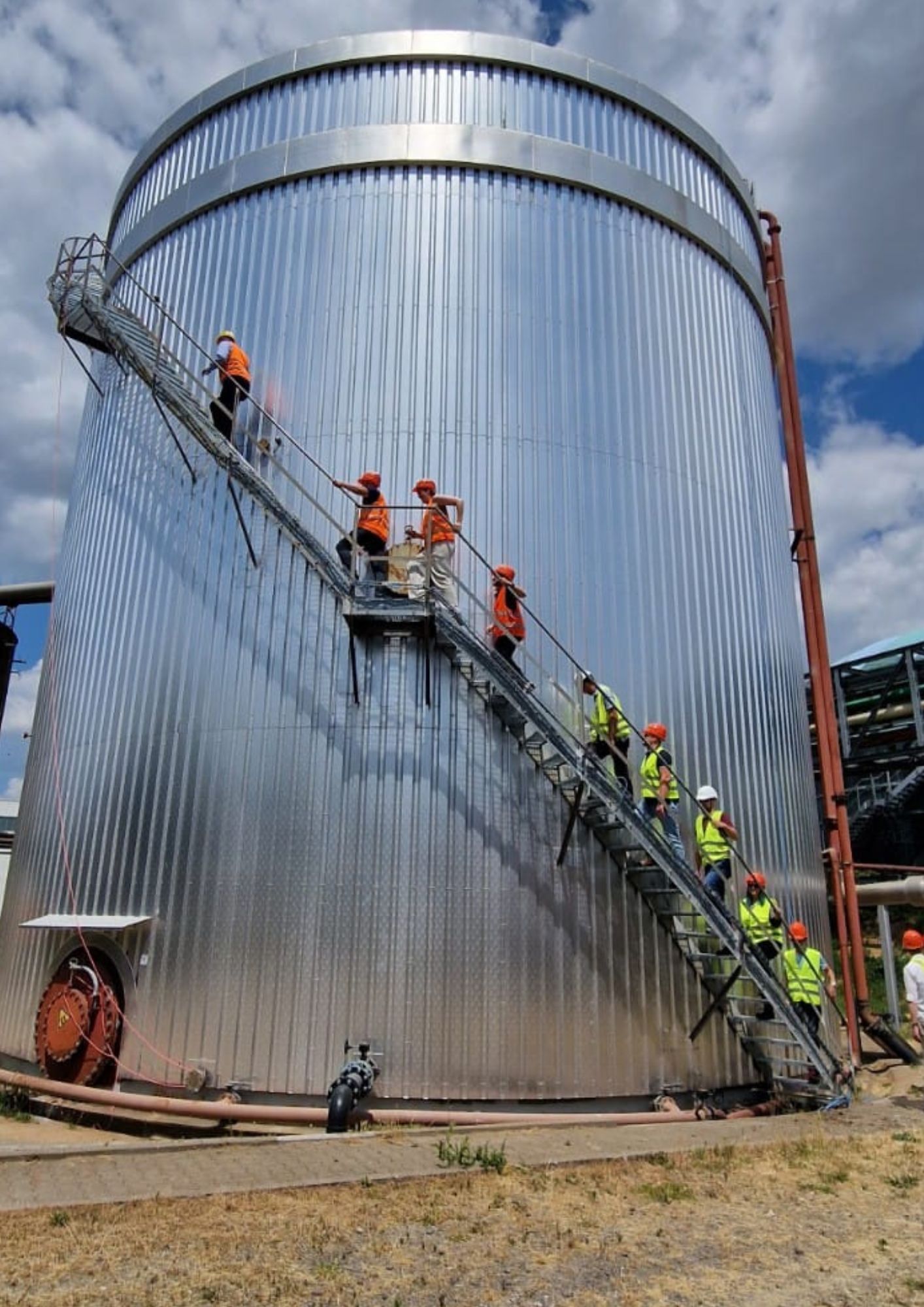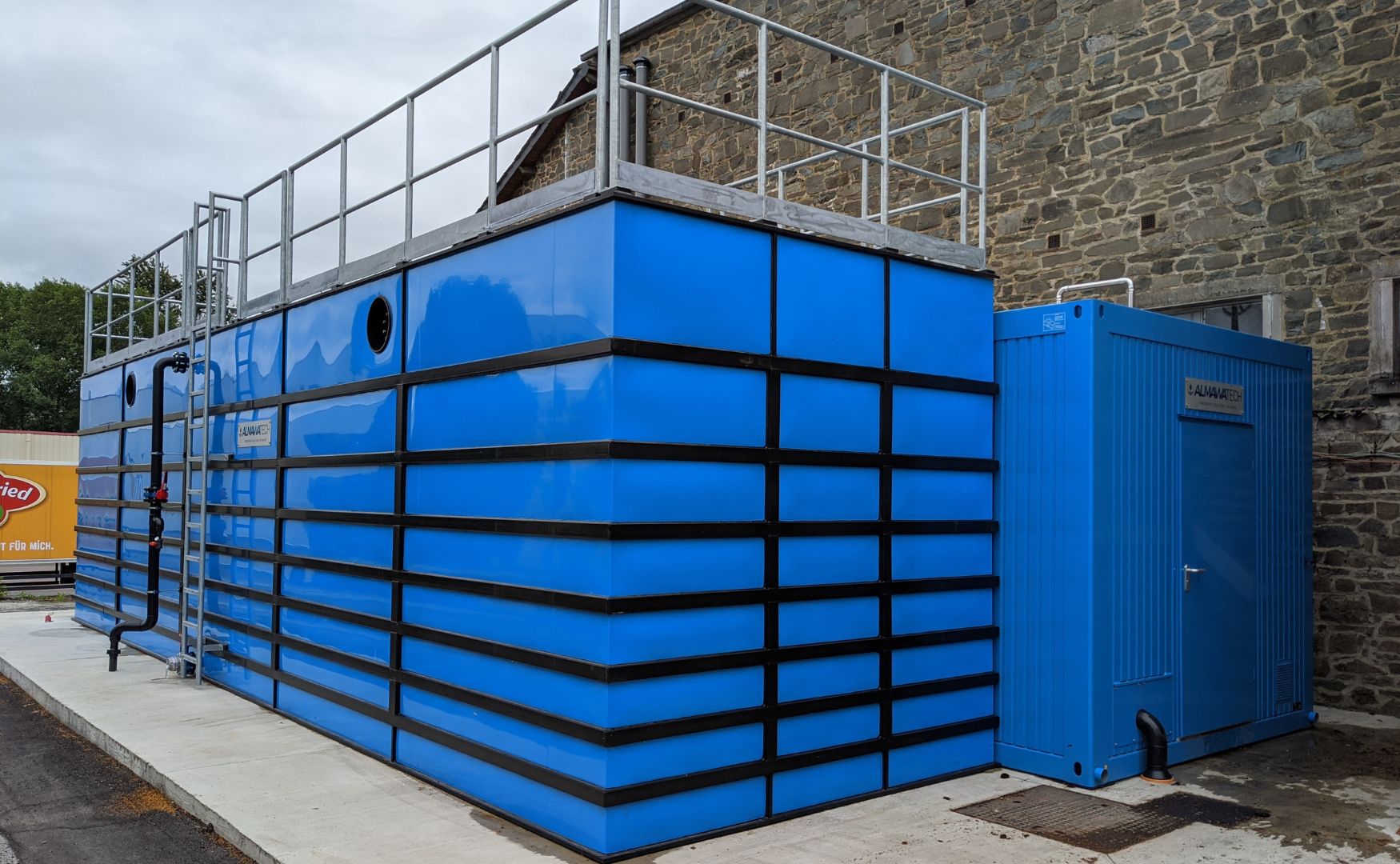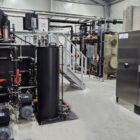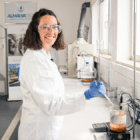Black water refers to a category of wastewater that consists primarily of toilet wastewater. In addition to faeces and urine, it also contains flushing water and other dissolved and undissolved substances from sanitary facilities. Blackwater has a higher concentration of organic substances, pathogenic microorganisms and nutrients than greywater (wastewater from showers, washbasins and kitchens).
In industrial and municipal wastewater treatment, the targeted treatment of black water plays a central role in ensuring hygienic safety and recovering valuable resources such as water, energy and nutrients.
Table of contents
Composition of black water
The composition of black water varies greatly depending on the source (e.g. households, industry, public facilities) and the flushing systems used.
Main components
- Organic substances:
- Biodegradable substances such as fats, proteins and carbohydrates.
- High proportion of biochemical oxygen demand (BOD) and chemical oxygen demand (COD).
- Pathogenic microorganisms:
- Bacteria (e.g. Escherichia coli), viruses and parasites from feces.
- Nutrients:
- Nitrogen compounds (e.g. ammonium, urea).
- Phosphates from cleaning agents or human excrement.
- Solids:
- Suspended and sedimentable materials, including fecal residues and paper fibers.
Typical concentration ranges
- BOD5: 300-600 mg/L.
- COD: 600-1200 mg/L.
- Total nitrogen: 40-80 mg/L.
- Total phosphorus: 10-20 mg/L.
- Solids (TSS): 150-400 mg/L.
Challenges in the treatment of black water
The treatment of black water places special demands on technology and management:
Hygienic safety:
- Pathogenic microorganisms require disinfection to protect public health.
High organic load:
- The high concentration of organic substances leads to an increased oxygen demand in biological reactors.
Nutrient elimination:
- Nitrogen and phosphorus must be removed or recovered in order to avoid environmental pollution (e.g. eutrophication).
Solids removal:
- Sedimentable and suspended solids must be effectively separated to prevent blockages and malfunctions.
Resource efficiency:
- Recovery of energy (e.g. biogas) and nutrients (e.g. phosphorus) is becoming increasingly important.
Process for the treatment of black water
1. mechanical pre-treatment
Mechanical pre-treatment is the first step in the purification of black water. The aim is to remove coarse solids and sedimentable substances in order to reduce the hydraulic and organic load on the subsequent treatment stages.
Technologies:
- Rakes and sieves:
- Removal of coarse material such as paper, hygiene articles and solid particles.
- Use of fine screens (mesh size 1-5 mm) to reduce solid loads.
- Sand trap:
- Separation of sedimentable materials such as sand, silt and small stone particles.
- Prevents deposits and wear in downstream pumps and pipes.
2. biological treatment
Biological treatment is the central step in the removal of organic compounds and nutrients from black water. A distinction is made between aerobic and anaerobic processes, which are often used in combination.
Anaerobic treatment of black water is a key technology for sustainable energy generation and wastewater treatment. In the absence of oxygen, microorganisms break down organic substances and produce biogas, which is converted from methane (CH4) and carbon dioxide (CO2).
a) Anaerobic digestion
How it works:
- Organic compounds are broken down by various microorganisms in several stages:
- Hydrolysis:
- Polymers (e.g. proteins, fats, carbohydrates) are broken down into smaller molecules such as amino acids, fatty acids and sugars.
- Acidogenesis:
- Conversion of the products of hydrolysis into organic acids, alcohol, hydrogen and carbon dioxide.
- Acetogenesis:
- Formation of acetic acid (CH3COOH) as a precursor to methane formation.
- Methanogenesis:
- Methanogenic microorganisms produce methane (CH4) and carbon dioxide from acetic acid or hydrogen.
- Hydrolysis:
- Typical methane content in biogas: 50-70 %.
- Organic compounds are broken down by various microorganisms in several stages:
b) UASB reactors (Upflow Anaerobic Sludge Blanket):
- Functionality:
- Black water is pumped into the reactor from below and passed through a granular sludge blanket.
- The microorganisms in the sludge blanket break down organic substances and produce biogas.
- Advantages:
- Efficient treatment of black water with a high organic load.
- High biogas production and low space requirement.
Energy generation
- The biogas produced can be burned directly in a combined heat and power plant (CHP) to generate electricity and heat.
- Decentralized use:
- Black water from urban districts or housing estates can be treated in small anaerobic digestion plants.
- The biogas produced is used to cover local electricity and heating requirements, enabling a self-sufficient energy supply.
Resource efficiency:
- Energy-positive operation: The energy gained from the biogas often exceeds the energy requirements of the system.
- Climate protection: Methane that would be released directly from faeces is used in a controlled manner, which reduces greenhouse gas emissions.

Photo: Our anaerobic biogas plant ALMA BHU GMR
3. further treatment after anaerobic biogas production
After anaerobic treatment, the water still contains residual contamination, which is removed by aerobic post-treatment. Two common technologies are the activated sludge process and the MBBR process.
Activated sludge process:
- Use of aerobic microorganisms to remove residual organic matter and nitrogen.
- High cleaning performance for wastewater with medium to low residual load.
MBBR (Moving Bed Biofilm Reactor):
- Use of carrier materials on which biofilms form.
- Biofilms ensure efficient removal of organic residues and nutrients.
- Advantage:
- Compact design.
- Lower sensitivity to load fluctuations in the inlet.
4. sludge treatment
The treatment of the sewage sludge produced during black water purification is an essential component:
- Dewatering: Reduction of the water content for easier handling.
- Digestion: Methane production from organic residues.
- Drying and incineration: Reduction of sludge volume and energy recovery.
Innovative approaches for black water treatment
Source-separated collection:
- Separation of black water and gray water at the source enables targeted treatment.
- Advantage: More efficient recovery of nutrients and biogas.
Resource recovery:
- Phosphorus recovery:
- Extraction of struvite (magnesium ammonium phosphate) from black water.
- Biogas production:
- Maximizing energy production through anaerobic processes.
- Phosphorus recovery:
Decentralized systems:
- Use of smaller modular systems in regions without a central sewage system.

Photo: Our MBBR plant ALMA BIO MBBR in container design
Regulatory requirements
Limit values for nutrients and organic pollution:
- Compliance with the legal limits for COD, nitrogen and phosphorus in accordance with the EU Water Framework Directive or national regulations.
Hygienic standards:
- Ensuring the complete removal of pathogenic microorganisms.
Conclusion
The treatment of black water is one of the most complex tasks in water and wastewater technology. It requires a combination of mechanical, biological and chemical processes to ensure hygienic safety, reduce organic pollution and recover valuable resources. Innovative approaches such as phosphorus recovery, biogas production and decentralized systems offer forward-looking solutions for sustainable and efficient blackwater treatment. An in-depth understanding of the physico-chemical and biological processes is crucial in order to develop customized systems for different applications and maximize operational efficiency.
For further information on our products, please feel free to contact us at any time!








